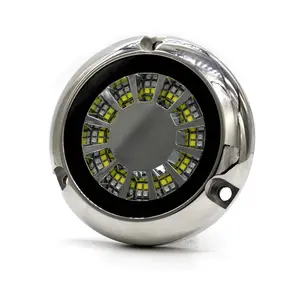
WEIKEN Marine Grade Round Underwater Light LED Boat Blue/ White Dual Color Boat Transom Lights With Flashing



















Navigating the world of small boats can be a thrilling adventure. Whether one is looking to explore the vast expanse of the ocean or enjoy a leisurely sail on a serene lake, having the right small boat can make all the difference. This guide aims to provide an in-depth understanding of the types, features, and materials of small boats.
When it comes to the small boat types, the options are as diverse as the open seas themselves. A popular choice is the dinghy, a small, lightweight boat that is versatile and easy to navigate. Dinghies can be propelled either by small boat motors or by oars. For those who prefer a bit of a challenge, the kayak is another type of small boat that requires manual paddling skills. Kayaks are great for solo adventures or for those who enjoy quiet moments in nature. If speed is more to one's liking, the jet boat, with its high-powered small boat engine, provides a thrilling ride. Lastly, the sailboat, the epitome of small boat sailing, offers a tranquil and serene boating experience, powered solely by the wind.
The features of a small boat often determine its performance and usage. A crucial feature is the hull design. Flat-bottom hulls offer stability in calm waters, making them ideal for fishing or leisurely cruises. V-shaped hulls, on the other hand, are designed to cut through waves, making them suitable for rough waters. Some small boats come equipped with small boat trailers for easy transportation. Another significant feature to consider is the boat's capacity. Some small boats are designed for solo voyages, while others can accommodate multiple passengers. Lastly, the propulsion system, whether it be a motor, oars, or sails, is another important feature that defines the small boat's operation.
The materials used in small boats can impact not only their performance but also their longevity. Traditionally, small boats were made of wood. However, modern manufacturing techniques have introduced other materials such as fiberglass, aluminum, and inflatable materials. Fiberglass boats are lightweight, durable, and relatively low maintenance, making them a popular choice. Aluminum boats, on the other hand, are known for their strength and resistance to corrosion. They are often used in small boat motor models for higher speed capabilities. Inflatable boats are lighter than all, making them easy to transport and store. However, they may not be as durable as their fiberglass or aluminum counterparts.
In conclusion, understanding the types, features, and materials of small boats can help one make an informed decision when choosing the right boat. Whether it's a peaceful sail on a calm lake or a thrilling ride on the open ocean, the ideal small boat awaits. With the right knowledge and preparation, the world of small boat sailing is ready to be explored.